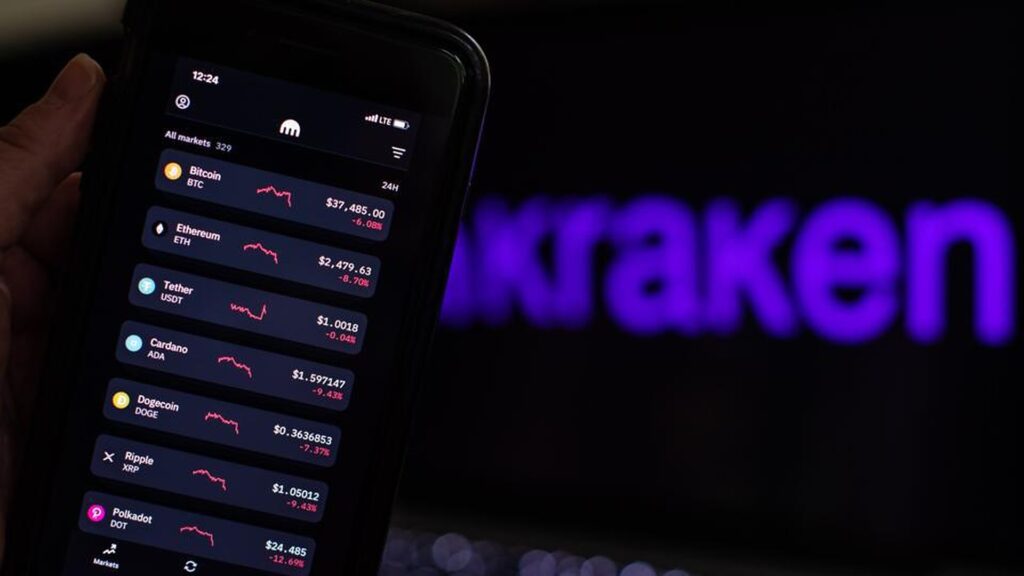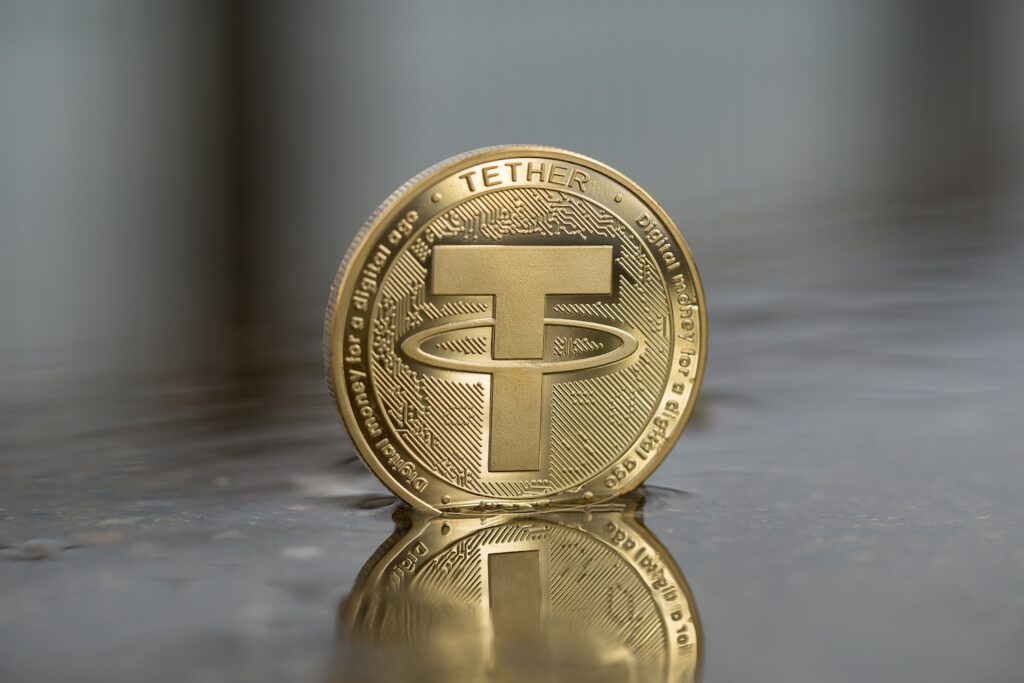Kraken Pro, a prominent U.S.-based cryptocurrency exchange, has recently announced the addition of new margin trading pairs, featuring Shiba Inu (SHIB), a popular meme-inspired cryptocurrency.
This new offering allows SHIB to be traded on margin against the U.S. dollar.
The exchange has set the maximum leverage for these transactions at three times, with a limit of 1.5 billion SHIB for both long and short positions.
Shiba Inu, known as an Ethereum-based meme coin, was first launched in 2020 by an anonymous developer named Ryoshi.
The coin was conceptualized to explore what could happen if a cryptocurrency was entirely community-driven.
This initiative poses the question: “What would happen if a cryptocurrency project was 100% run by its community?”
Four years after its inception, Shiba Inu has risen to become the 11th largest cryptocurrency by market capitalization, which now stands at about $13.49 billion.
Alongside SHIB, the Shiba Inu ecosystem comprises other cryptocurrencies such as BONE and LEASH, accumulating a market capitalization of approximately $180 million.
READ MORE: Bitcoin Price Plunges Following Lackluster Debut of Hong Kong ETF
The ecosystem also includes Shibarium, a layer-2 Ethereum Virtual Machine (EVM) compatible blockchain, which was launched in August 2023.
Since its launch, Shibarium has locked in a total value of $2.46 million.
The blockchain statistics for Shiba Inu are notable, with 105,393 accounts, 1.79 million addresses, 415.52 million completed transactions, and 2,265 verified smart contracts, according to Shibariumscan.
The growth and development of Shiba Inu reflect its significant evolution from a mere dog-inspired meme to a substantial crypto ecosystem.
Its primary token, SHIB, not only enjoys widespread acceptance as a payment method across various large platforms but also shows promise for further expansion with its continued inclusion on major trading platforms.
This progress underscores the coin’s potential beyond the typical expectations of a meme-based cryptocurrency.
To submit a crypto press release (PR), send an email to sales@cryptointelligence.co.uk.
OpenAI, a leading developer in artificial intelligence (AI), finds itself embroiled in a privacy complaint brought forth by Noyb, a data rights protection advocacy group based in Austria.
Noyb launched the complaint on April 29, alleging that OpenAI has neglected to address erroneous information generated by its AI chatbot, ChatGPT.
The group contends that this inaction may violate privacy regulations within the European Union (EU).
The complaint stems from an incident involving an unidentified public figure who sought information about themselves from OpenAI’s chatbot.
Despite repeated requests, OpenAI purportedly declined to rectify or delete the inaccurate data, citing technical limitations.
Furthermore, the company refused to disclose details about its training data and its origins.
Maartje de Graaf, a data protection lawyer at Noyb, emphasized the importance of adherence to legal standards in technology, stating,
“If a system cannot produce accurate and transparent results, it cannot be used to generate data about individuals.
‘The technology has to follow the legal requirements, not the other way around.”
READ MORE: Dogecoin Leads Meme Coin Rally with 4.43% Increase in Value Over Past Month
Noyb escalated the complaint to the Austrian data protection authority, urging an investigation into OpenAI’s data processing practices and the mechanisms it employs to ensure the accuracy of personal data processed by its large language models.
De Graaf underscored the current challenges faced by companies in aligning chatbot technologies like ChatGPT with EU data protection laws.
Noyb, also known as the European Center for Digital Rights, operates out of Vienna, Austria, with a mission to support European General Data Protection Regulation laws through strategic legal actions and media initiatives.
This incident adds to a growing concern surrounding the accuracy and compliance of chatbot technologies.
In a similar vein, in December 2023, a study revealed issues with Microsoft’s Bing AI chatbot, now called Copilot, providing misleading information during political elections in Germany and Switzerland.
Additionally, Google’s Gemini AI chatbot faced criticism for generating inaccurate imagery, prompting the company to issue an apology and commit to model updates.
To submit a crypto press release (PR), send an email to sales@cryptointelligence.co.uk.
The Bitcoin market has experienced a significant downturn following its fourth halving, confounding expectations of a surge similar to previous cycles.
Since the halving event on April 20, Bitcoin’s value has plummeted by 11%.
It was trading around $64,000 at the time of the halving, briefly climbed above $67,000 two days later, but then dropped to below $57,000 by May 1, as per CoinGecko.
Currently, the price stands at $57,362, marking a 7% decrease over the last 24 hours and a 17% decline over the month.
This downturn has surprised market observers who anticipated a rise post-halving, in line with historical trends where significant rallies often followed such events.
For instance, after the 2016 halving, Bitcoin surged approximately 3,000% within 17 months, achieving a then-record high of $20,000 in December 2017.
This year’s halving diverges from previous patterns due primarily to an unprecedented bull run leading up to the event, which saw Bitcoin reach new highs.
READ MORE: Yuga Labs CEO Initiates Overhaul Amid Layoffs and Restructuring
“What’s unique about this latest Bitcoin halving is the incredible bull run and price action leading up to it.
“Even considering this recent pullback, Bitcoin has still been up 35% since the start of the year,” Mati Greenspan of Quantum Economics explained to Cointelegraph.
Greenspan also reasoned that the recent drop was predictable, given broader economic pressures and market trends, remarking, “Considering the expectation of yet another Fed pivot and what’s happening in the stock market, Bitcoin’s current price action is hardly a surprise.
“We’ll be a lot smarter about that later today, though.”
Predictions had been made as early as March 2024 by analysts at JPMorgan, suggesting a potential decline in Bitcoin’s price to around $42,000 post-halving.
Markus Thielen, CEO and head analyst at 10x Research, forecasts a further dip to $52,000. Thielen attributes the previous rally mainly to substantial inflows into Bitcoin ETFs, which have significantly reduced recently.
Despite the current decline, some experts, including investment researcher Lyn Alden, believe there are compelling reasons, beyond just the halving and U.S. ETFs, for Bitcoin to achieve new heights in 2024.
To submit a crypto press release (PR), send an email to sales@cryptointelligence.co.uk.
Tether, the entity behind the renowned Tether stablecoin, recently underwent significant restructuring, culminating in a substantial investment move.
On April 29, Tether revealed a strategic infusion of $200 million into Blackrock Neurotech, effectively securing a majority stake in the neural implant company.
This investment marked the inaugural venture of Tether Evo, a fresh division concentrating on the convergence of human potential and technology.
Established in 2008, Blackrock Neurotech stands as a trailblazer in human brain-computer-interface (BCI) technology, renowned for its cutting-edge interfaces.
The company is dedicated to aiding millions worldwide afflicted by paralysis and neurological disorders hindering basic functions.
Blackrock Neurotech’s groundbreaking brain interface technology has empowered patients to control robotic arms, navigate wheelchairs, communicate, browse the internet, and even drive vehicles using their thoughts.
In a notable instance in 2016, patient Nathan Copeland made headlines by utilizing Blackrock BCI to interact with a robotic arm, culminating in a fist bump with then-U.S. President Barack Obama.
READ MORE: Dogecoin Leads Meme Coin Rally with 4.43% Increase in Value Over Past Month
Tether’s $200 million investment aims to bolster the commercialization and implementation of medical solutions already benefiting over 40 individuals.
Additionally, the investment will fuel advancements in research and development, ensuring Blackrock Neurotech remains a key player in the BCI landscape with a steadfast focus on human advancement.
Paolo Ardoino, CEO of Tether, envisions Blackrock Neurotech as merely the inception of Tether Evo’s mission to champion projects that redefine technological boundaries in enhancing human potential.
He stated, “Blackrock Neurotech represents a leap towards a future where technology not only complements but enhances our human experience, and we at Tether are proud to begin this journey with them.”
Florian Solzbacher, co-founder of Blackrock Neurotech, emphasized the company’s long-term commitment to restoring functions in individuals, underscoring the necessity of dedicated and visionary partners.
He expressed gratitude towards Tether, highlighting their shared vision in fostering technological innovations for the betterment of humanity.
This announcement follows Tether’s introduction of four new business divisions on April 18, signaling its diversified focus across Tether Data, Tether Finance, Tether Power, and Tether Edu.
To submit a crypto press release (PR), send an email to sales@cryptointelligence.co.uk.
The United States Department of Justice (DOJ) has opposed a motion seeking to dismiss conspiracy and money laundering charges against Roman Semenov, co-founder of Tornado Cash.
The DOJ contended that the defense’s motion introduced disputed facts best left for jury consideration, arguing it was premature for early-stage motions.
In response, DOJ prosecutors scrutinized the alleged crimes attributed to Semenov.
They contested the defense’s portrayal of Tornado Cash, highlighting its inception in 2019 as a crypto mixer service, comprising a website, user interface, smart contracts, and a network of “relayers.”
Accusing Roman Storm and co-developer Roman Semenov of conspiring to commit money laundering, operating an unlicensed money transmitter, and violating sanctions, U.S. authorities alleged that Tornado Cash facilitated funds laundering for entities like North Korea’s Lazarus Group.
While Storm pleaded not guilty to all charges in September 2023 and was released on a $2 million bond, Semenov clarified his role, stating he contributed to code design but disclaimed accountability for its usage.
Semenov’s legal team emphasized in their motion to dismiss that Tornado Cash doesn’t function as a custodial mixing service and doesn’t meet the criteria of a “financial institution.”
They argued Storm lacked control over the service to prevent its misuse by entities like Lazarus Group.
READ MORE: Franklin Templeton Launches Spot Ether ETF on DTCC Platform Amid SEC Review
Prosecutors led by Damian Williams countered, holding Semenov accountable for operating the cryptocurrency mixer and accused him of enabling criminal anonymity.
They criticized Tornado Cash’s co-founders for failing to implement sufficient changes to exclude sanctioned addresses.
These developments coincide with the U.S. government’s heightened scrutiny of crypto-mixing services.
Recently, on April 24, the CEO and CTO of Samourai Wallet, another cryptocurrency mixer, were arrested and charged with conspiracy to commit money laundering and operating an unlicensed money transmitting business, each carrying a maximum sentence of 20 and five years, respectively.
Ki Young Ju, CEO of CryptoQuant, noted that crypto mixing services aren’t inherently criminal, responding to the arrests of Samourai Wallet’s founders.
To submit a crypto press release (PR), send an email to sales@cryptointelligence.co.uk.
Bitcoin‘s trajectory remains a subject of fervent speculation, with diverging views on whether its recent surge to $70,000 constitutes the peak of its current cycle.
Veteran trader Peter Brandt proposes an “exponential decay” pattern, indicating that Bitcoin’s successive cycles have seen diminishing peaks, with each reaching approximately 20% of the previous cycle’s peak gain.
Brandt estimates the current cycle’s top at $70,000, a mark already surpassed in March when prices briefly exceeded $73,000.
However, he acknowledges a 25% likelihood that Bitcoin has already crested this cycle.
READ MORE: Epic Satoshi from Fourth Bitcoin Halving Block Sells for $2.13 Million
Giovanni Santostasi, CEO of Quantonomy, rebuts Brandt’s theory, citing insufficient data for robust statistical analysis.
Instead, Santostasi proposes a model based on long-term power law behavior, projecting a fourth cycle peak around December 2025 at approximately $210,000, with a projected bottom for the subsequent cycle around $83,000.
Numerous experts offer their own predictions, with Swyftx lead analyst Pav Hundal foreseeing Bitcoin doubling by the 2028 halving, reaching an estimated $120,000.
Laurent Benayoun, CEO of Acheron Trading, anticipates a potential cycle peak of $180,000. Fidelity Digital Assets, meanwhile, revises its medium-term outlook for Bitcoin, asserting that it is “no longer cheap.”
The current price of Bitcoin stands at $62,528, a 15% decline from its mid-March all-time high.
Despite the variance in forecasts, the cryptocurrency market continues to captivate investors and analysts alike, with each theory offering its own perspective on Bitcoin’s trajectory and potential future peaks.
To submit a crypto press release (PR), send an email to sales@cryptointelligence.co.uk.
The Central Bank of Nigeria (CBN) has refuted a report claiming it issued a directive mandating banks and financial institutions to identify individuals or entities involved in transactions with cryptocurrency exchanges, placing such accounts on Post No Debit (PND) instruction for six months.
A “Post No Debit” (PND) instruction restricts certain transactions on a customer’s account, prohibiting debit transactions, including withdrawals and payments.
Initially denying the report, the CBN later retracted its denial, confirming the allegations were false.
The bank asserted its commitment to identifying and penalizing those engaging in illegal buying and selling of Tether, particularly through peer-to-peer (P2P) methods.
The purported circular also indicated that regulated financial institutions involved in crypto or facilitating payments for crypto exchanges are prohibited.
However, this conflicts with a previous ban lifted in December 2023, allowing banks to facilitate transactions for crypto exchanges.
The CBN lifted the ban nearly two years after implementing a comprehensive ban on banks’ involvement with digital currencies.
READ MORE: SEC Lawyers Resign Following Court Rebuke for Misconduct in Crypto Case
In a statement, the CBN acknowledged the global surge in demand and adoption of crypto, deeming it unjustifiable to maintain stringent restrictions on financial institutions as imposed in 2021.
However, amidst the rapid devaluation of the naira and an inflation rate of 29.9%, the government shifted focus to platforms offering cryptocurrency services.
It disabled websites associated with crypto trading, known for setting informal valuations for the naira.
Binance faced significant scrutiny when the CBN expressed concerns over “suspicious financial transactions” through Binance Nigeria in 2023.
CBN head Olayemi Cardoso disclosed that $26 billion had flowed through Nigeria via Binance in 2023 from unidentified sources and users.
Further complicating matters, Binance executive Tigran Gambaryan, based in the United States, was detained in Nigeria, facing five charges related to money laundering following discussions with Nigerian officials regarding Binance’s regulatory compliance.
Another executive, Nadeem Anjarwalla, who participated in these discussions, subsequently escaped custody and was tracked down in Kenya, facing extradition.
To submit a crypto press release (PR), send an email to sales@cryptointelligence.co.uk.
The Shiba Inu community’s expansion strategy for ShibaSwap marks a significant milestone in the development of the ecosystem.
Lucie’s announcement regarding the expansion to both Ethereum and Shibarium chains reflects a strategic move to broaden the platform’s reach and utility.
ShibaSwap, already a vital component of the Shiba Inu ecosystem, will now extend its services to encompass a wider range of users and tokens.
The inclusion of Ethereum and Shibarium brings several advantages to ShibaSwap.
Firstly, it strengthens the security infrastructure by leveraging the robust security protocols of these layer-1 blockchain networks.
Whether through Ethereum’s proof-of-work or proof-of-stake mechanisms or Shibarium’s own security features, the expansion bolsters the resilience of the ecosystem against potential threats.
Moreover, tapping into the Ethereum and Shibarium ecosystems enhances ShibaSwap’s interoperability, facilitating seamless interactions with other tokens, decentralized applications (dApps), and exchanges.
This interoperability opens up new avenues for users, enabling them to access a broader spectrum of services within the crypto landscape.
READ MORE: Shiba Inu Prepares for Shibarium Network Overhaul with May 2nd Hard Fork
Additionally, the integration with layer-1 networks ensures that ShibaSwap remains deeply entrenched in the core infrastructure of the crypto space.
While layer-2 solutions offer faster transactions, the foundational processes of token creation and management primarily occur on layer 1.
By expanding to Ethereum and Shibarium, ShibaSwap ensures its continued relevance and centrality within the crypto ecosystem.
The reliance of SHIB, BONE, and LEASH tokens on layer-1 blockchains for security, interoperability, and fundamental token operations highlights the interconnected nature of different layers within the crypto landscape.
This expansion not only showcases Shiba Inu’s commitment to innovation but also paves the way for a new era of growth and opportunity within its ecosystem of tokens.
To submit a crypto press release (PR), send an email to sales@cryptointelligence.co.uk.
The Shiba Inu development team is readying for a substantial overhaul of the Shibarium network, slated for a hard fork on May 2nd.
“This pivotal change is designed to reshape the user experience and bolster the network’s infrastructure to support a rapidly expanding ecosystem,” shared through official channels including X and a comprehensive blog post.
In blockchain technology, a hard fork mandates all users and nodes to upgrade to the newest software version, paving the way for innovative features and enhancements.
The impending Shibarium hard fork will introduce significant changes.
One core objective is to boost transaction processing speeds, promoting network efficiency and reducing bottlenecks.
Additionally, the hard fork aims to stabilize transaction fees, especially during peak network usage, to make transactions more affordable and inviting for users.
Security and stability are also focal points.
READ MORE: Franklin Templeton Launches Spot Ether ETF on DTCC Platform Amid SEC Review
The upgrade will implement improved security measures and fortify the network infrastructure to safeguard against potential vulnerabilities, ensuring a safe environment for transactions.
The Shiba Inu development team’s blog post, titled “Shibarium Network Hard Fork Update: Faster, Cheaper, and Ready for the Future,” highlights a strategic vision extending beyond immediate gains.
The goal is to prepare Shibarium for mass adoption, enhancing network capabilities while maintaining affordability and user-friendliness.
Anticipating a significant reduction in transaction costs, the team projects fees as low as 0.0000219 BONE ($0.00001), emphasizing inclusivity within the financial ecosystem.
With the Shibarium hard fork scheduled for May 2nd, the community is urged to stay informed about ongoing developments and prepare for the changes.
This upgrade marks a crucial phase in Shibarium’s evolution, aiming to enhance its effectiveness and accessibility.
To submit a crypto press release (PR), send an email to sales@cryptointelligence.co.uk.
Dogecoin (DOGE) has emerged as the standout among meme coins following the conclusion of Q1’s meme frenzy, showing an increase in value over the past month.
According to insights from IntoTheBlock, an on-chain data provider, Dogecoin has experienced a rally of 4.43% in the last 30 days.
In contrast, meme coins like Pepe (PEPE) and Shiba Inu (SHIB) have seen declines, with decreases of 33% and 25.28%, respectively.
In the latest trading session, Dogecoin is valued at $0.16, marking a 4.77% increase over the past 24 hours.
Coinmarketcap data indicates that this upsurge aligns with the broader crypto market, which has witnessed a 1.93% increase in market capitalization.
However, a closer look at Dogecoin’s daily chart reveals a bearish trend in its technical analysis, with the MACD persistently below the signal line.
Moreover, the negative directional index (red) has remained above the positive (green) since April 12, signaling current market control by sellers. These indicators suggest the possibility of further declines.
Dogecoin is currently experiencing a resurgence, with efforts to establish $0.20 as its new support level.
Despite fluctuations that briefly brought its value down to approximately $0.12, DOGE has bounced back, consistently testing and maintaining positions above a previous long-term resistance level.
READ MORE: Bitcoin Holds Firm Above $63,000 Despite Regulatory Scrutiny and Economic Turbulence
Crypto analyst Rekt Capital underscores this pattern as indicative of a positive trend.
Rekt Capital asserts, “Dogecoin is now in the process of retesting this ~$0.20 level as new support.
It could get volatile around here, but lose sight of this important technical step.
Dogecoin is retesting this area to position itself for further future upside.”
These developments suggest the likelihood of Dogecoin ending April above the $0.20 mark, solidifying its position within this new range.
However, failure to reach this target by month-end could result in the cryptocurrency oscillating between $0.12 and $0.20 until it gathers momentum for another ascent.
According to Coincodex, current sentiment surrounding Dogecoin is predominantly bullish, with the majority of technical indicators signaling growth.
Among these indicators, 21 are bullish, while seven are bearish.
Furthermore, projections for 2025 hint at a potential price range for Dogecoin between $0.129366 and $0.650073, suggesting a potential increase of 304.18% from its current value.
To submit a crypto press release (PR), send an email to sales@cryptointelligence.co.uk.












